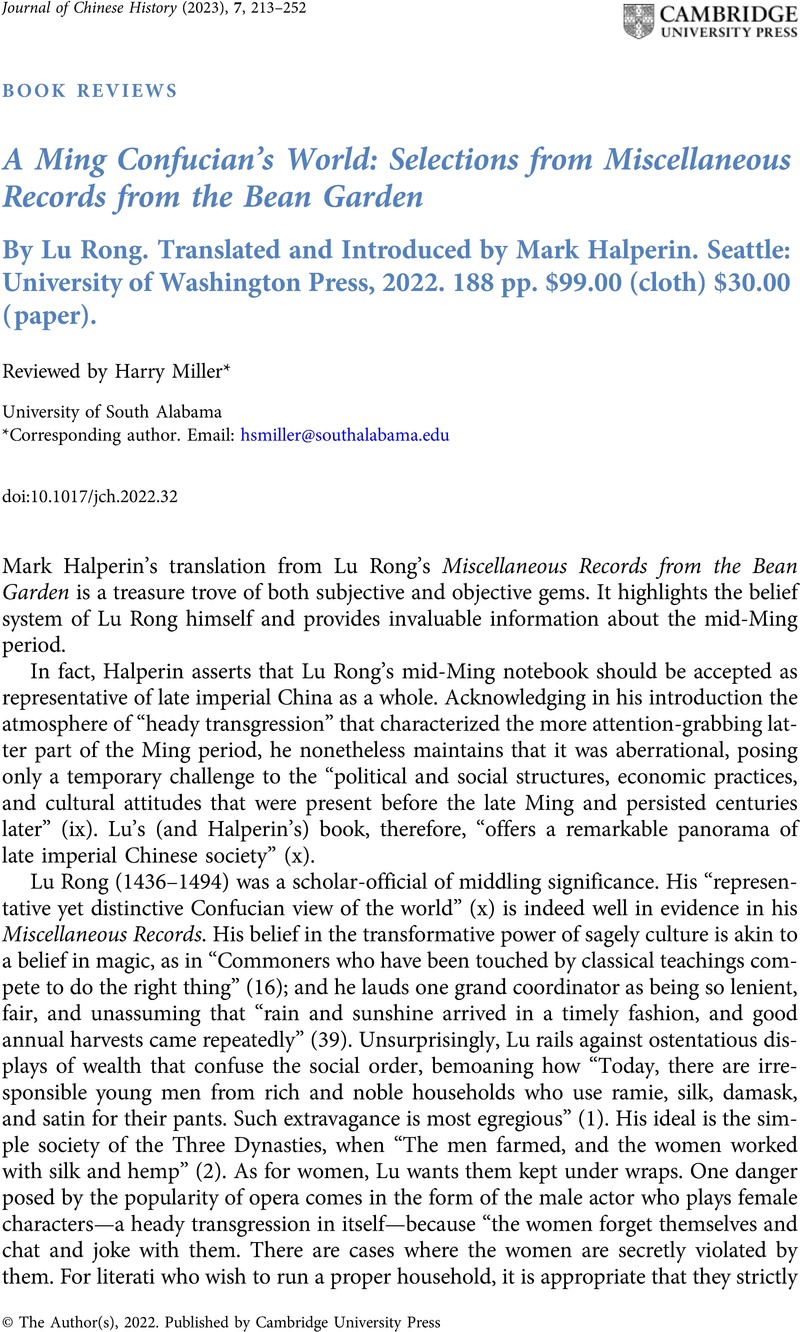No CrossRef data available.
Article contents
A Ming Confucian's World: Selections from Miscellaneous Records from the Bean Garden By Lu Rong. Translated and Introduced by Mark Halperin. Seattle: University of Washington Press, 2022. 188 pp. $99.00 (cloth) $30.00 (paper).
Review products
A Ming Confucian's World: Selections from Miscellaneous Records from the Bean Garden By Lu Rong. Translated and Introduced by Mark Halperin. Seattle: University of Washington Press, 2022. 188 pp. $99.00 (cloth) $30.00 (paper).
Published online by Cambridge University Press: 21 July 2022
Abstract
An abstract is not available for this content so a preview has been provided. Please use the Get access link above for information on how to access this content.

- Type
- Book Review
- Information
- Copyright
- Copyright © The Author(s), 2022. Published by Cambridge University Press



